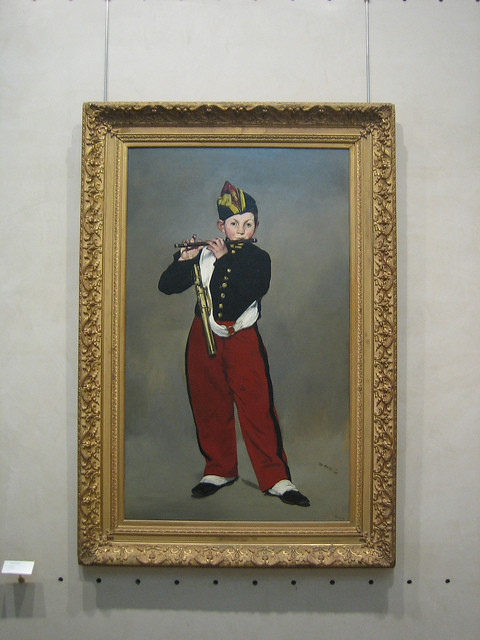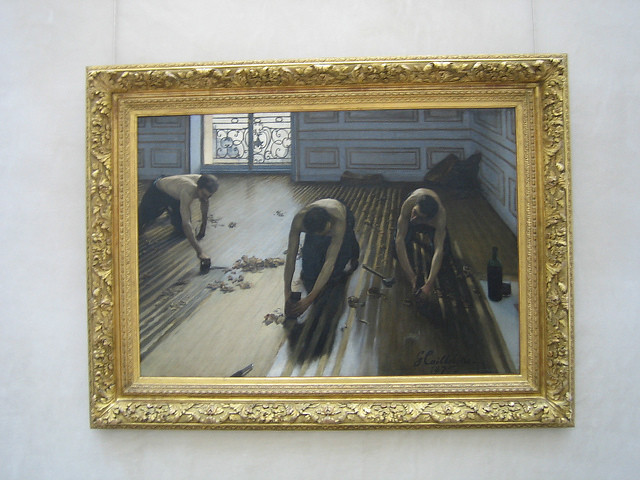When I was in Paris for the first time, in early October 2000, the summer tourist season had passed, therefore I was able to enjoy many museums in a more leisurely pace and spent wonderful hours at Musée d'Orsay. There were so many famous and wonderful works there and it felt almost criminal not to include in my top picks great masters such as Van Gogh, Cézanne, etc. Yet, it had to be done.
My first choice was Le fifre (The Fifer) by Édouard Manet, a full-length portrait of a little boy in bold black, red and white band uniform, playing a flute, in front of an abstract almost flat muted background. The boy was determined to concentrate in his music-making and stay in his own world, and despite of his facing the viewers, he utterly ignored our presence. His pose, rather peculiar, lent certain liveliness to this rather static scene. The somewhat melancholic mood contrasted strongly with his rosy complexion, adding another layer of meaning to this mesmerizing painting.

Le fifre (The Fifer), Édouard Manet, 1866
My second favorite was a painting full of actions - Les raboteurs de parquet (The Floor Scrapers), by Gustave Caillebotte. I always loved paintings depicting laborers and farmers, if they were not done for picturesque reasons. Here, the painter lowered his gaze to the level of those laborers on the floor, and the bright back light gave them clearly defined and powerful silhouettes, and they reminded me of nimble and powerful leopards of all things. Caillebotte had a masterful way of depicting different materials - paneled walls, wrought-iron balcony, wooden floor before and after being scraped, with varying sheen and changing reflections. Yet, we always came back to those three working men, with their exposed upper torsos and outstretched long arms, clearly the focal points of the painting. They were doing menial jobs, yet with great dignity. They were also like willing offerings. This painting, presented laborers in a way often reserved for noble characters in the past, therefore elevated those people to a new height, without being sentimental. That was the eloquence of this masterpiece.

Les raboteurs de parquet (The Floor Scrapers), Gustave Caillebotte, 1875
My Favorite Museum Collection Series
>> My Favorite Museum Collection Series 31: My Favorite Art Works at Centre Pompidou, Paris
<< My Favorite Museum Collection Series 29: My Favorite Artworks at Musée du Louvre, Paris





No comments:
Post a Comment